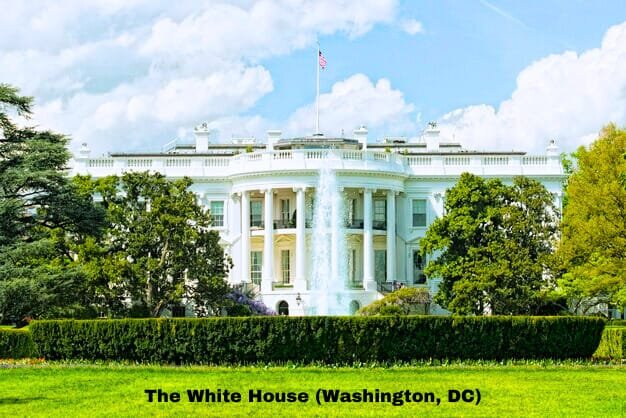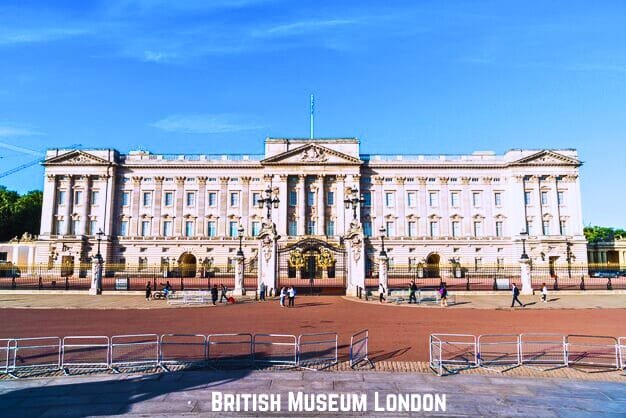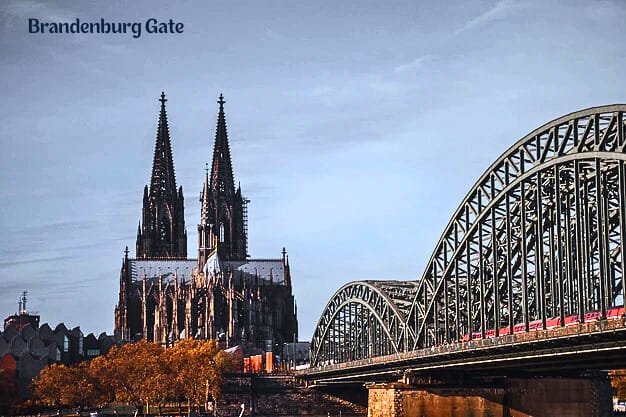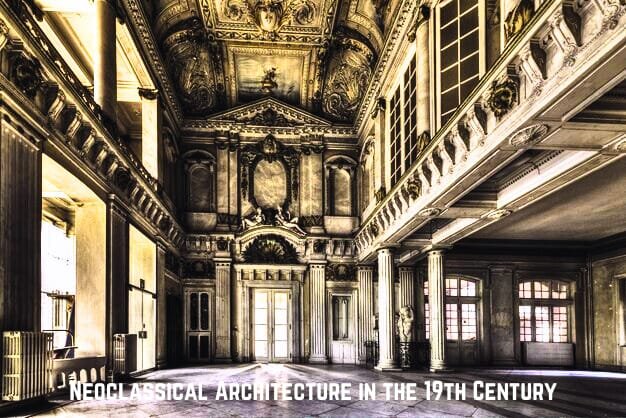Neo classical architecture in 19th century, a revival of the classical styles of ancient Greece and Rome, reached its zenith in the 19th century. This architectural movement, characterized by its grandeur, symmetry, and emphasis on proportion, emerged as a response to the ornate excesses of the Baroque and Rococo periods. Rooted in the Enlightenment ideals of reason, order, and democracy, neoclassical architecture became a symbol of cultural identity, political power, and artistic refinement.
From iconic government buildings to majestic cultural institutions, this style left an indelible mark on the architectural landscape of the time. In this article, we’ll explore the history, defining elements, and enduring legacy of neo classical architecture in 19th century, showcasing why it remains a cornerstone of architectural excellence.
Table of Contents
What is Neo classical Architecture in 19th century?
A Return to Classical Antiquity
Neoclassical architecture is a revival of the architectural principles of ancient Greece and Rome. In the 19th century, this style became a dominant force, reflecting the era’s fascination with classical ideals of beauty, harmony, and proportion. The movement sought to bring back the simplicity and grandeur of classical antiquity, moving away from the overly decorative styles of the Baroque and Rococo periods.
The Philosophical Roots of Neoclassicism
The movement was deeply influenced by the Enlightenment, which emphasized reason, logic, and a return to classical knowledge. Architects and thinkers of the time sought to create structures that embodied these ideals, resulting in buildings that were both aesthetically pleasing and symbolically powerful. The Enlightenment’s focus on democracy and civic virtue also played a significant role in shaping neoclassical architecture, as it was often used for government buildings and public institutions.
The History of Neoclassical Architecture
The Rediscovery of Ancient Civilizations
The 19th century saw a renewed interest in classical antiquity, fueled by archaeological discoveries such as the excavations of Pompeii and Herculaneum. These findings inspired architects to replicate the grandeur of ancient Greek and Roman structures. The discovery of these ancient cities provided a wealth of information about classical architecture, which architects of the time eagerly incorporated into their designs.
The Spread of Neoclassicism Across the Globe
From Europe to the Americas, Neo classical architecture in 19th century became a global phenomenon. It was adopted for government buildings, museums, and cultural institutions, symbolizing power, democracy, and cultural refinement. In Europe, countries like France, Germany, and England embraced neoclassicism as a way to connect with their classical past. In the United States, neoclassical architecture became a symbol of the young nation’s democratic ideals and aspirations.
Key Architects and Their Contributions
Architects like Karl Friedrich Schinkel in Germany, John Nash in England, and Thomas Jefferson in the United States played pivotal roles in popularizing neoclassical design during this period. Schinkel’s ALTES Museum in Berlin is a prime example of neoclassical architecture, with its grand columns and symmetrical design.
John Nash’s work in London, including the redesign of Buckingham Palace, also reflects the neoclassical style. Thomas Jefferson, one of America’s founding fathers, was a passionate advocate of neoclassical architecture. His design for the University of Virginia, with its rotunda inspired by the Pantheon in Rome, is a testament to his commitment to this architectural style.
Defining Elements of Neoclassical Architecture in the 19th Century
- Symmetry and Proportion
One of the hallmarks of Neo classical architecture in 19th century is its emphasis on symmetry and proportion. Buildings were designed with balanced facades and precise geometric shapes, reflecting the architectural programming concept. This focus on symmetry created a sense of harmony and order, which was central to the neoclassical aesthetic.
- Grand Columns and Pediments
Columns, particularly Doric, Ionic, and Corinthian orders, were a defining feature of neoclassical design. These columns were often used to create grand entrances and porticos, adding a sense of grandeur and elegance to the buildings. Pediments, often adorned with sculptural reliefs, were another key element of neoclassical architecture. These triangular structures, placed above the columns, added a sense of drama and importance to the buildings.
- Minimalist Ornamentation
Unlike the ornate Baroque style, neoclassical architecture favored simplicity and restraint. Decorative elements were used sparingly, focusing instead on clean lines and geometric forms. This minimalist approach allowed the beauty of the architecture to shine through, without the distraction of excessive ornamentation.
- Use of Classical Motifs
Architects incorporated classical motifs such as acanthus leaves, egg-and-dart patterns, and friezes to evoke the spirit of ancient Greece and Rome. These motifs were often used in the decoration of columns, pediments, and interior spaces, adding a touch of classical elegance to the buildings.
Famous Examples of Neoclassical Architecture in the 19th Century
The White House (Washington, DC)

As one of the most iconic examples of neoclassical architecture in the 19th century, the White House embodies the ideals of democracy and power. Its grand columns and symmetrical design reflect the influence of classical antiquity. Designed by James Hoban, the White House was inspired by the Leinster House in Dublin, which itself is a neoclassical building. The White House’s neoclassical design has made it a symbol of American democracy and a lasting testament to the enduring appeal of this architectural style.
The British Museum (London)

Designed by Sir Robert Smirke, the British Museum is a masterpiece of neoclassical design. Its grand facade and use of classical motifs make it a symbol of cultural refinement. The museum’s iconic portico, with its massive columns and pediment, is a prime example of neoclassical architecture. The British Museum’s design reflects the 19th century’s fascination with classical antiquity and its desire to connect with the past.
The Brandenburg Gate (Berlin)

This iconic monument, inspired by the Propylaea of the Acropolis in Athens, is a testament to the global reach of neo classical architecture in 19th century. Designed by Carl Gotthard Langhans, the Brandenburg Gate was completed in 1791 and has since become a symbol of German unity and peace. Its grand columns and classical design reflect the neoclassical style’s emphasis on symmetry and proportion.
The Role of Neoclassical Architecture in Shaping Society
A Symbol of Power and Democracy
Neoclassical buildings were often used for government and cultural institutions, symbolizing the ideals of democracy, stability, and enlightenment. The use of neoclassical architecture for these types of buildings reflected the belief that architecture could inspire and uplift society.
Reflecting Cultural Identity
In the 19th century, nations used neoclassical architecture to assert their cultural identity and connection to the classical past. By adopting the architectural styles of ancient Greece and Rome, countries were able to project an image of cultural sophistication and historical continuity.
Neoclassical Architecture vs. Other Architectural Styles
Neoclassical vs. Baroque
While Baroque architecture is characterized by its ornate and dramatic style, neo classical architecture in 19th century emphasizes simplicity, symmetry, and proportion. The Baroque style, which emerged in the 17th century, is known for its elaborate decoration and dynamic forms. In contrast, neoclassical architecture seeks to create a sense of order and harmony through its clean lines and balanced proportions.
Neoclassical vs. Gothic
Gothic architecture, with its pointed arches and intricate details, contrasts sharply with the clean lines and geometric forms of neoclassical design. Gothic architecture, which emerged in the Middle Ages, is known for its verticality and emphasis on light. Neoclassical architecture, on the other hand, is characterized by its horizontal lines and emphasis on symmetry.
The Enduring Legacy of Neoclassical Architecture in the 19th Century
- Influence on Modern Architecture
The principles of neo classical architecture in 19th century continue to influence modern design, particularly in government and cultural buildings. The emphasis on symmetry, proportion, and simplicity has made neoclassical architecture a timeless style that continues to inspire architects today.
- Preservation and Restoration
Many neo classical architecture in 19th century have been preserved and restored, ensuring that their legacy endures for future generations. These buildings serve as a reminder of the enduring appeal of neoclassical architecture and its importance in the history of architecture.
Conclusion
Neo classical architecture in 19th century, shaping modern urban landscapes and inspiring contemporary architectural styles. Its core principles—balance, harmony, and grandeur—have remained relevant in civic buildings, museums, and even private residences. The revival of classical forms in different eras proves that neoclassical design is more than just a historical movement; it is a universal language of beauty and order that continues to resonate across generations.
Moreover, the cultural significance of neo classical architecture in 19th century lies in its ability to bridge the past and the present. By drawing inspiration from the architectural achievements of ancient Greece and Rome, neoclassicism preserves historical continuity while adapting to evolving artistic and functional needs. Whether in government institutions or artistic monuments, its enduring appeal underscores humanity’s appreciation for classical aesthetics and the ideals they represent—democracy, strength, and intellectual pursuit. As we move forward, neoclassical architecture remains a powerful reminder of the past’s influence on the present and the future.
FAQs
1.What are the key characteristics of neo classical architecture in 19th century?
Neoclassical architecture is characterized by symmetry, proportion, grand columns, and minimalist ornamentation, reflecting the ideals of classical antiquity.
2.Why was neoclassical architecture so popular in the 19th century?
It symbolized power, democracy, and cultural refinement, making it a popular choice for government and cultural institutions.
3.How does neoclassical architecture differ from Baroque architecture?
Neoclassical architecture emphasizes simplicity and symmetry, while Baroque architecture is known for its ornate and dramatic style.
4.What are some famous examples of neo classical architecture in 19th century?
The White House, the British Museum, and the Brandenburg Gate are iconic examples of neoclassical architecture from this period.
5.How has neoclassical architecture influenced modern design?
Its principles of symmetry, proportion, and simplicity continue to inspire modern architects, particularly in the design of government and cultural buildings.

